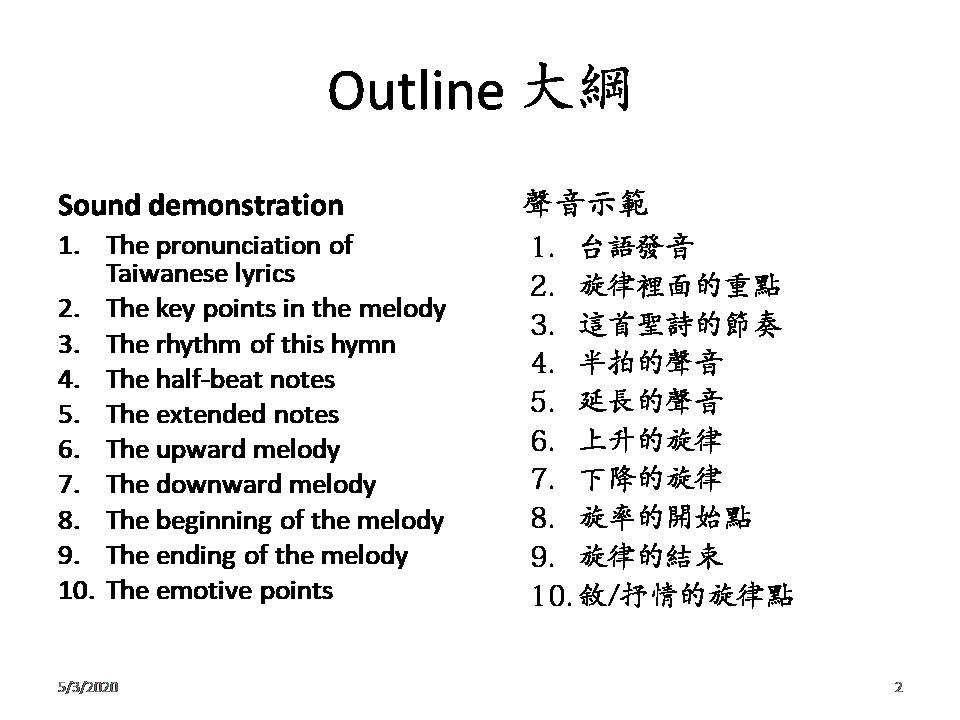English only https://hopegardening.blogspot.com/2020/04/weekly-briefing-on-hymns-to-be-sung-in.html
中文版 Chinese version https://hopegardening.blogspot.com/2020/04/weekly-briefing-on-hymns-to-be-sung-in_28.html https://www.youtube.com/playlist?list=PLgcznScNc5ejJsQYK6jxT-Xg0XOC7DDFT
Video demonstration 影音示範版
-----
Here are some sample of the melody of the new hymn we will learn and sing on May 3. 2020
這裡有一些樣本可以做參考,幫助我們認識五月三日要唱的 一首新聖詩。
It is a new lyric written by Rev. Carolyn Winfrey Gillette in 2009 She also wrote other lyrics for the same tune. 這是吉立牧師 在2009年發表新歌詞。她套用這個歌曲所寫的歌詞不只這份。
http://www.carolynshymns.com/emmaus_bound_on_easter_day.html
O, Waly, Waly https://www.youtube.com/watch?v=O7xErHCaFho
O, Waly, Waly https://www.youtube.com/watch?v=49McH1hjUpE
It will be interesting to find out how and why the same tune can be sung to so many different lyrics with different taste, styles, and flavors. 去探討「為什麼一個歌曲可能套入那麼多不同的歌詞,唱出不同的韻味、格調、與品味。
Double click the sentence at right to see more. 點擊右邊這一句看看。 There are several issues to be watched and learned from. 這個聖詩有許多話題可咀嚼。
What are the points for a Sunday demonstration before worship service? 主日禮拜前對這一首聖詩的示範有哪些要點?
https://www.youtube.com/watch?v=OwNb5WNTgiM&list=PLgcznScNc5ejJsQYK6jxT-Xg0XOC7DDFT
- The pronunciation and enunciation of Taiwanese lyrics 台語發音與咬字
- The basic ways of singing the Taiwanese lyrics 台語唱出來的基本模樣
- The overall points of faith expressed in music 音樂上整體的信仰表達
- The highlights of singing in Taiwanese, demonstrated in the special points of the long notes, words having more than one vowel, and the climax. 用台語唱出來的亮點,包括長音、多母音的字,高潮點。
- The mood of walking and pondering 行走以及沈思的情境








